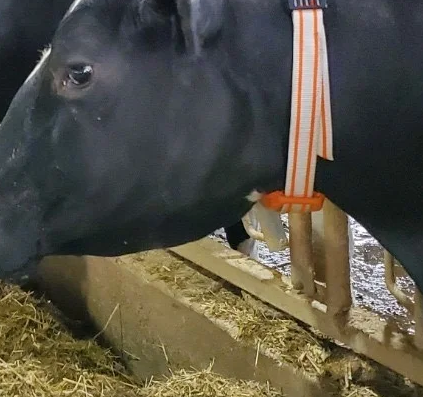The vast majority of breeding cows give birth to a single calf every year. Embryo transfer (ET) enables a farmer to rapidly propagate the genetics of the herd's best females. These top females are able to produce calves with exceptional genetics if they are artificially inseminated with the sperm of bulls that have a high genetic quality. Females in the herd with less desirable genes can be used as recipients for the embryos, and the general genetic quality of the herd may be greatly improved in just a brief period of time.
Early in the 1950s, a surgical method was used to deliver the first calf from an embryo transfer. The ability to collect and transfer embryos without undergoing surgery today has made this reproductive management technique increasingly popular, particularly in the seedstock sector of beef commerce. In 2008, embryo transfer was used in around 1.6% of beef cattle ranches in the USA. The outcomes of superovulation and embryo transfer can be unpredictable; however, there are actions that producers can take to maximize the likelihood of a successful outcome.
There are two elements needed for embryo transfer:
1) producing and extracting (flushing) embryos from a donor female
2) Placing each embryo in a different female host (the recipient), who then carries the pregnancy to term and delivers the resulting baby. It is not required that the same producer completes these two tasks. Embryos may be created and sold to other manufacturers, who then implant them into the female recipients of their own choice.

Pros of Embryo Transfer in Cattle
Enhanced genetic development
Breeders are able to make the most of the genetic potential of their herds through the use of embryo transfer. This is accomplished by selecting the most attractive animals for reproduction. This may result in more rapid genetic advancement and the generation of elite progeny.
Enhanced performance
Breeders can get more offspring from a single cow through embryo transfer than they could through natural reproduction. This can increase the efficacy of breeding programs and reduce the amount of time and resources needed to produce desirable offspring.
Higher reproductive capacity
Cows that have trouble getting pregnant or taking it to term can have their fertility problems fixed with embryo transfer. Breeders can improve the odds of having a healthy baby by transferring embryos to a more fertile cow.
Increased global trade
Embryo transfer can make it easier for countries to trade better genetics with each other. This has the potential to help improve the genetic quality of cattle herds in nations that may not have access to the same genetics as those in more advanced nations.
Less chance of diseases spreading
The danger of disease transmission between animals can be decreased via embryo transfer since the embryos can be checked for genetic disorders before being transferred. As a result, fewer antibiotics and other treatments will be required and infectious diseases will be less likely to spread.
Cons of Embryo Transfer in Cattle
Cost
Embryo transfer can be costly because it requires specialized apparatus and skilled professionals. The cost of embryo collection and transfer is significant, and there may be further expenses for the care of recipient cows and their offspring.
Technical proficiency
Embryo transfer necessitates a high level of technical skill, and errors in the procedure can result in lower success rates. Finding qualified experts to carry out the process can be challenging as well.
Possibility of lower fertility
Numerous rounds of embryo transfer in cows may eventually result in decreased fertility, according to some studies. The stress of the process or the side effects of the hormone therapies used to synchronize recipient cows with donor cows may be to blame.
Decreased genetic variety
If breeders depend too much on a limited number of high-performing animals, embryo transfer may result in decreased genetic diversity within a population. As a result, the population's resistance to environmental threats may decline, increasing the likelihood of genetic illnesses.
Ethical issues
Some people have raised ethical concerns regarding the use of embryo transfer in cattle, especially if it includes the use of hormone therapy or other procedures that may be detrimental to the animals involved in the process.










0 Comments